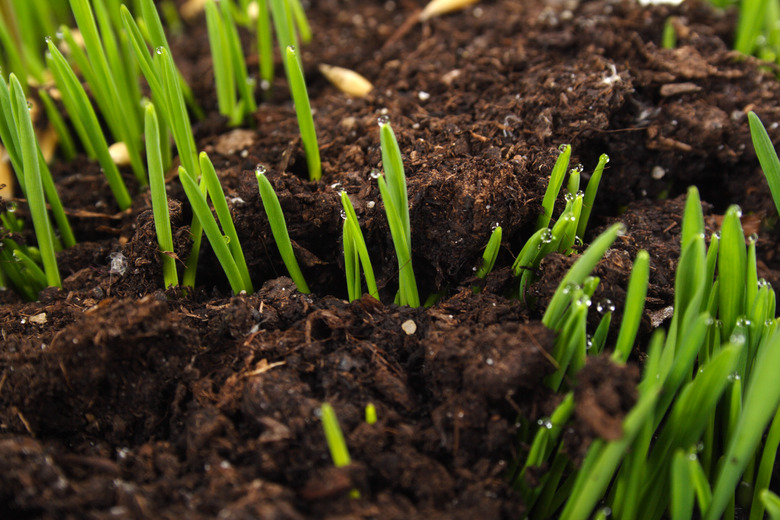How Long Can I Store Grass Seed Before It Goes Bad?
Grass seed, like any other plant seed, has a finite shelf life. Grass seed stored for more than one year gradually has fewer seeds that would sprout, or germinate, if planted. The shelf life of lawn grass seed depends mainly on the strength and health of the grass plants (Poaceae plant family) that produced the seed and how the seed was stored after it was harvested.
Tip
Properly stored, bagged grass seed can remain viable for up to one year after the test date printed on its label.
The Lifespan of Grass Seed
When stored properly, bagged grass seed can remain fully viable for one year after the test date stated on its label. The date is when the seeds' germination rate was tested. That rate should be 80 to 95 percent, depending on the type of grass. The rate should remain valid through at least the first year of storage after the test date, unless the seed is kept improperly. Each additional year of storage after the first year reduces the germination rate by 10 to 20 percent.
Storing Grass Seed Properly
Grass seed should be kept in a cool, dry place where air can circulate around it and the temperature will stay between 40 and 50 degrees Fahrenheit. The seed should not be stored in an unheated shed, garage or any other place where the temperature will drop below 32 F. Keep bags of grass seed off the floor and someplace where mice can't get to them. A basement or cellar is a suitable storage place as long as it is dry. The seed also can be stored in a working refrigerator if an open box of baking soda or a commercial desiccant is placed in the appliance to remove moisture.
Testing Grass Seed Germination
Although old grass seed won't germinate as well as fresh seed, it still can be used if the amount sown is increased proportionally. Begin testing the germination rate by spreading a damp paper towel on a flat surface. Lay 10 seeds in a row on the towel, and then roll up the towel. Place the rolled paper towel in a zip-type plastic bag, and leave it in a warm place for one week. Then remove the rolled towel from the plastic bag. Count how many seeds sprouted. If eight seeds sprouted, then the seeds have an 80 percent germination rate. If five or fewer seeds sprouted, the germination rate is only 50 percent or lower; in that case, consider obtaining fresh grass seed.
Sowing Grass Seed
Grass seeds need sufficient seed-to-soil contact in order to sprout. That means a sowing depth of no more than 1/4 inch. Also, the soil should have a high moisture content so soil moisture can enter the seeds. Sow grass seeds in spring or fall. Set your spreader's rate to sow 12 to 16 seeds per 1 square inch. Rake the seeds lightly into the soil. Grass seeds need the right amount of moisture to sprout. Keep the top 1 or 2 inches of soil moist, but not sopping wet, until the seeds have sprouted. Shake straw loosely over the seeded area to shade the seeds until they sprout.
